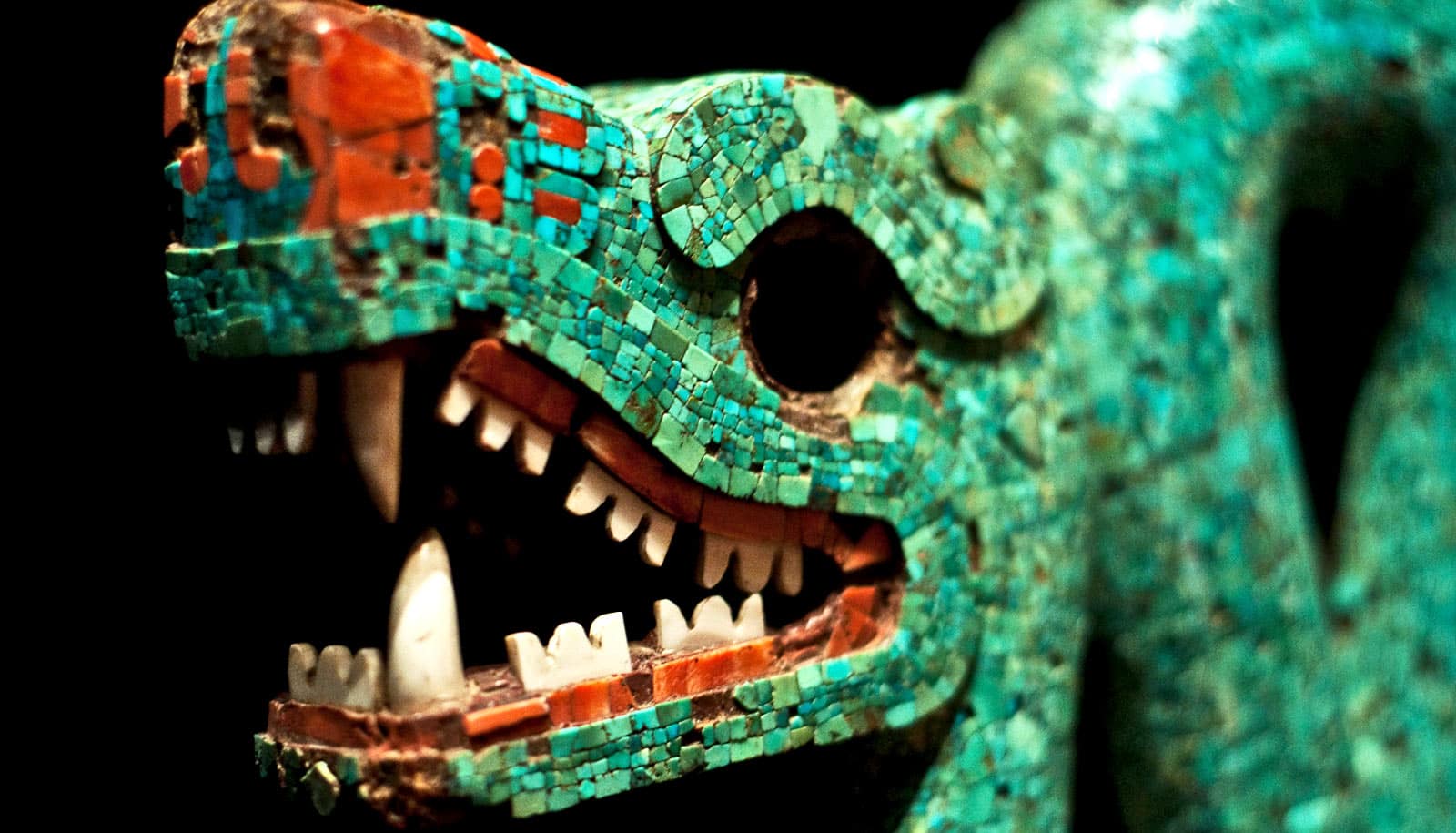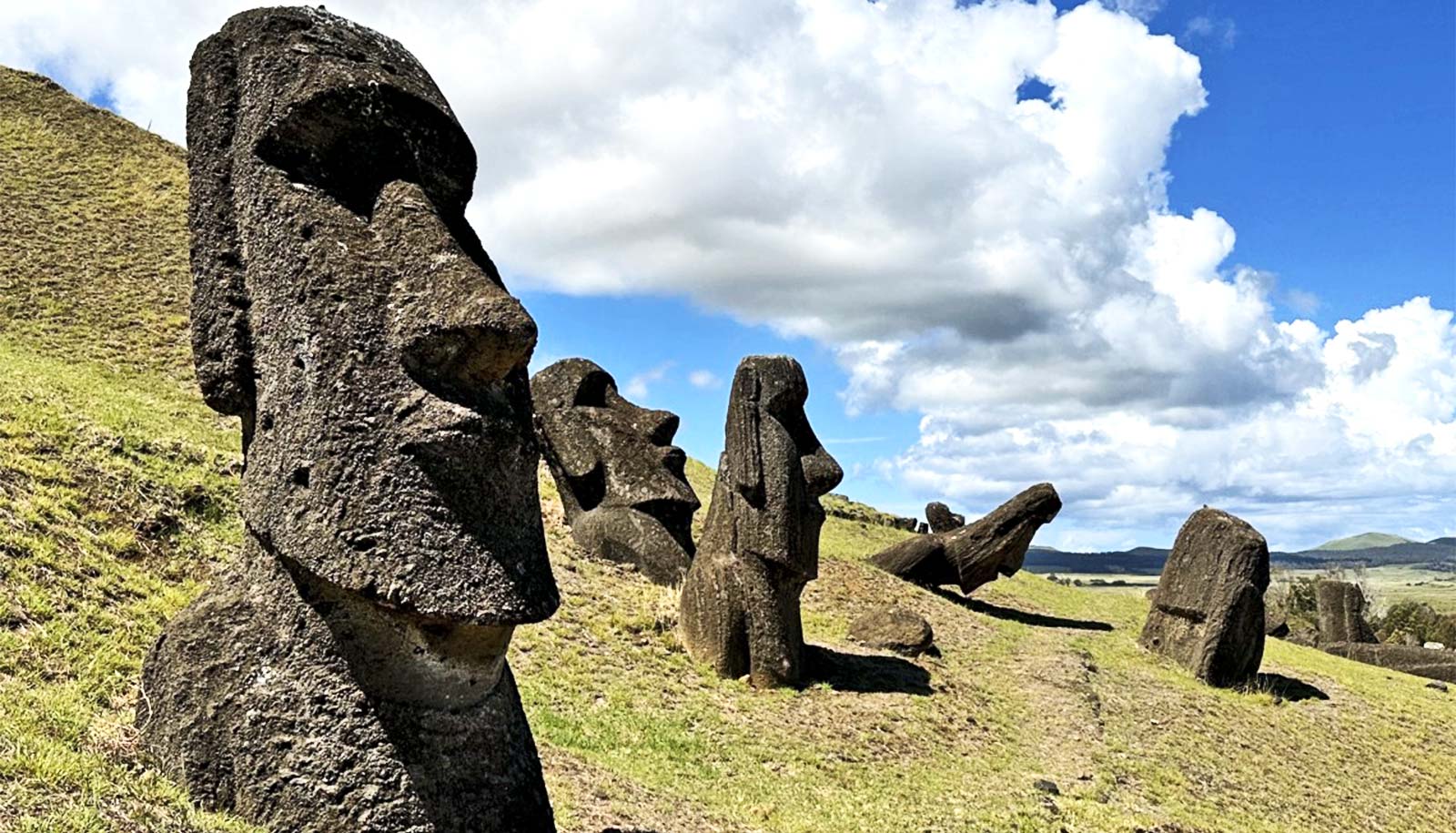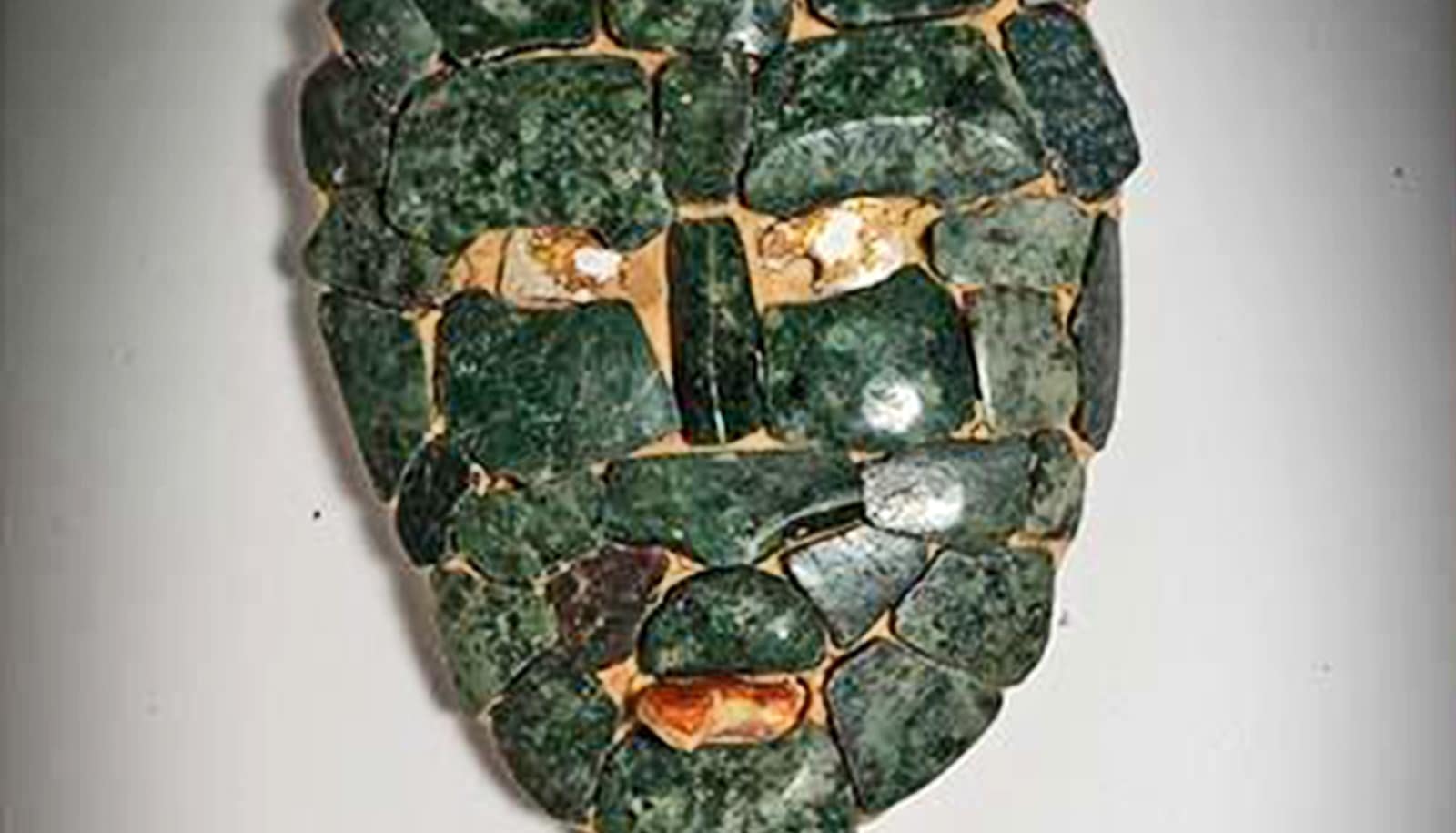New research overturns more than a century of thought about the source of turquoise that ancient civilizations in Mesoamerica used.
For more than 150 years, scholars have argued that the Aztec and Mixtec civilizations, which revered the precious, blue-green mineral, acquired it through import from the American Southwest. However, extensive geochemical analyses reveal that the true geologic source of Aztec and Mixtec turquoise lies within Mesoamerica, the vast region that extends from central Mexico to Central America.
The researchers measured the isotopic signatures of Mesoamerican turquoise artifacts associated with both the Aztecs and Mixtecs. These isotopic signatures function like fingerprints that can be used to determine the geologic origins of the turquoise.
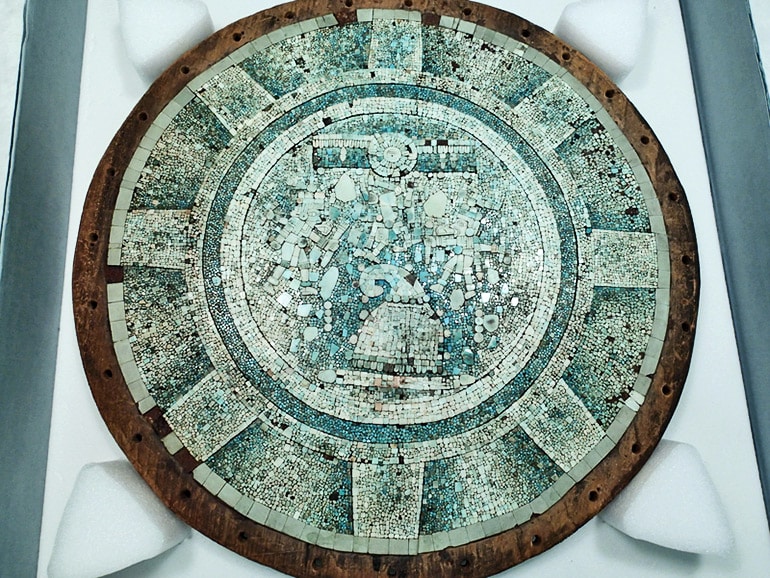
Specifically, the researchers carried out analyses of lead and strontium isotopes on fragments of turquoise-encrusted mosaics, which are one of the most iconic forms of ancient Mesoamerican art. Their samples included dozens of turquoise mosaic tiles excavated from offerings within the Templo Mayor, the ceremonial and ritual center of the Aztec empire, which is located in present-day Mexico City.
They also analyzed five tiles associated with Mixteca-style objects held by the Smithsonian’s National Museum of the American Indian. The analyses revealed that turquoise artifacts had isotopic signatures consistent with geology of Mesoamerica, not the Southwestern United States.
“This work revises our understanding of these relatively rare objects and provides a new perspective on the availability of turquoise, which was a highly valued luxury resource in ancient Mesoamerica,” says lead study author Alyson Thibodeau, an assistant professor of earth sciences at Dickinson College. The research is based on work Thibodeau did while she was a student at the University of Arizona.
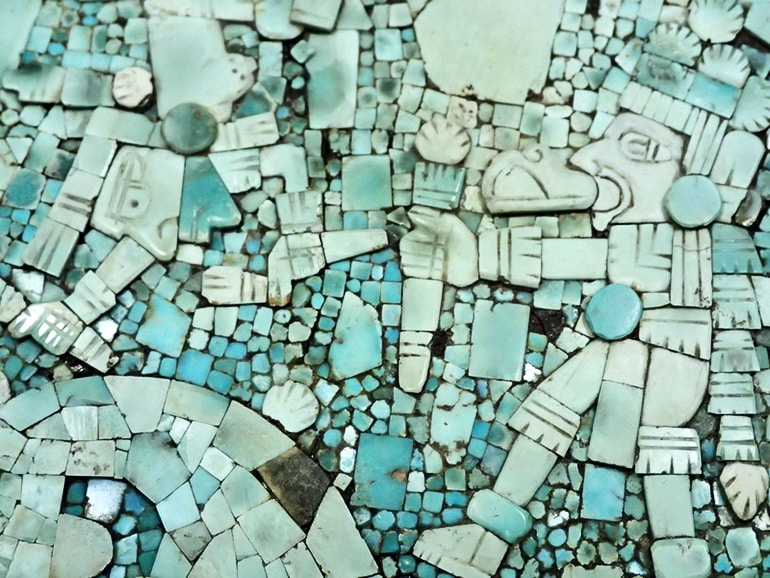
Turquoise figures prominently in Aztec poetry and rituals, and was used to make jewelry, shields, knife handles, mirrors, and other objects belonging to high-status members of Aztec society, like rulers and priests.
“There’s been a long preference for green and blue stones that goes back to the first millennium BC,” says David Killick, a professor in the School of Anthropology at the University of Arizona. “After about 900 AD, turquoise became the preferred blue/green stone in the Southwestern US and Mesoamerica.”
While the new research points to Mesoamerica as the source of Aztec and Mixtec turquoise, exactly where the mineral came from hasn’t been pinpointed, as no turquoise mines have been discovered in the area.
“There are very few known turquoise sources in Mesoamerica, which is why many archaeologists thought it came from the US,” Killick says. “But even though we can no longer find the source, it must once have existed and been mined out, because this turquoise bears the signature of a big block of the Earth’s crust that wraps around present Mexico City.”
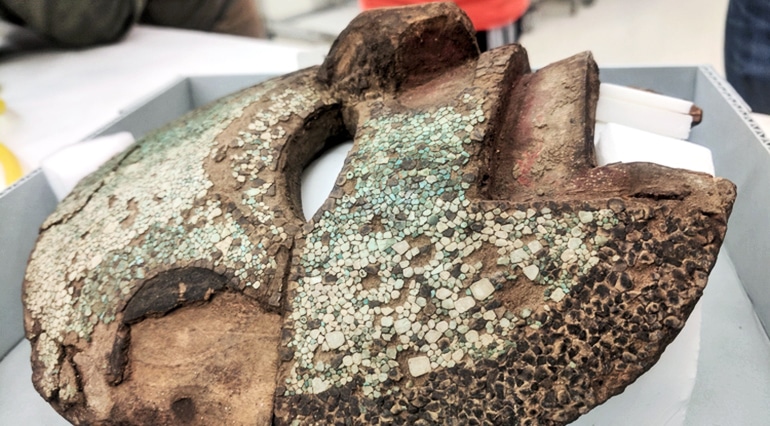
The new work is the result of a decade-long collaboration between archaeologists and isotope geochemists to understand the nature of turquoise circulation and trade across southwestern North America. In earlier published research, Thibodeau showed that isotopic signatures could distinguish among turquoise deposits across the Southwestern US and identified the geologic sources of turquoise artifacts from archaeological sites in Arizona and New Mexico.
Thibodeau says that the long-standing assumption that Mesoamerican civilizations imported turquoise from the Southwest had not been fully substantiated with evidence, and that the new geochemical measurements unveil a different story.
Ancient ruins hint at life for regular folks
“These findings potentially reshape our understanding of both the nature and extent of long-distance contacts between Mesoamerican and Southwestern societies,” Thibodeau says. “I hope this inspires people to be skeptical of claims.”
The research appears in the journal Science Advances. Additional researchers from the University of Arizona, California State University at San Bernardino, and the Museo del Templo Mayor in Mexico City contributed to the work.
Source: University of Arizona
